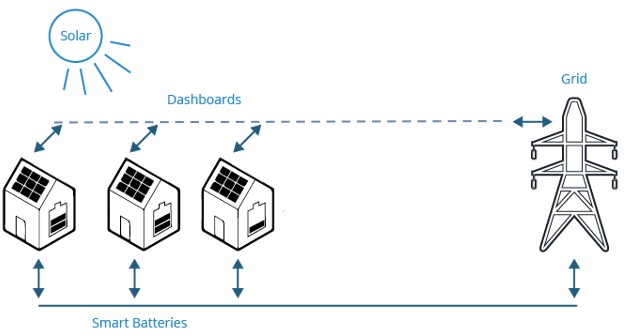Project Info
COMPLETE
 Project Title
Project Title
 Project Title
Project Title
Virtual Power Plant (VPP) Pilot Phase I Impact Evaluation
Project Number DR19.05 Organization SCE End-use Plug Loads and Appliances Sector Residential Project Year(s) 2019 - 2023Description
The behind-the-meter (BTM) battery systems will be administered by Sunrun® and used to provide planned and real-time demand response grid services. The VPP project will enroll 200-500 customers in the project from a population of approximately 1,000 customers with existing or new Sunrun PV-paired battery systems. Customers will use the systems for TOU rate arbitrage and emergency backup services when the systems are not providing demand response grid services. SCE will execute demand response events by dispatching signals to Sunrun via its demand response automation system (DRAS). Customers will be compensated for participating and able to override events. Sunrun will reserve at least 20% of customer’s battery power for emergency backup. The project will be implemented for at least 12 months to cover the heating and cooling seasons.
